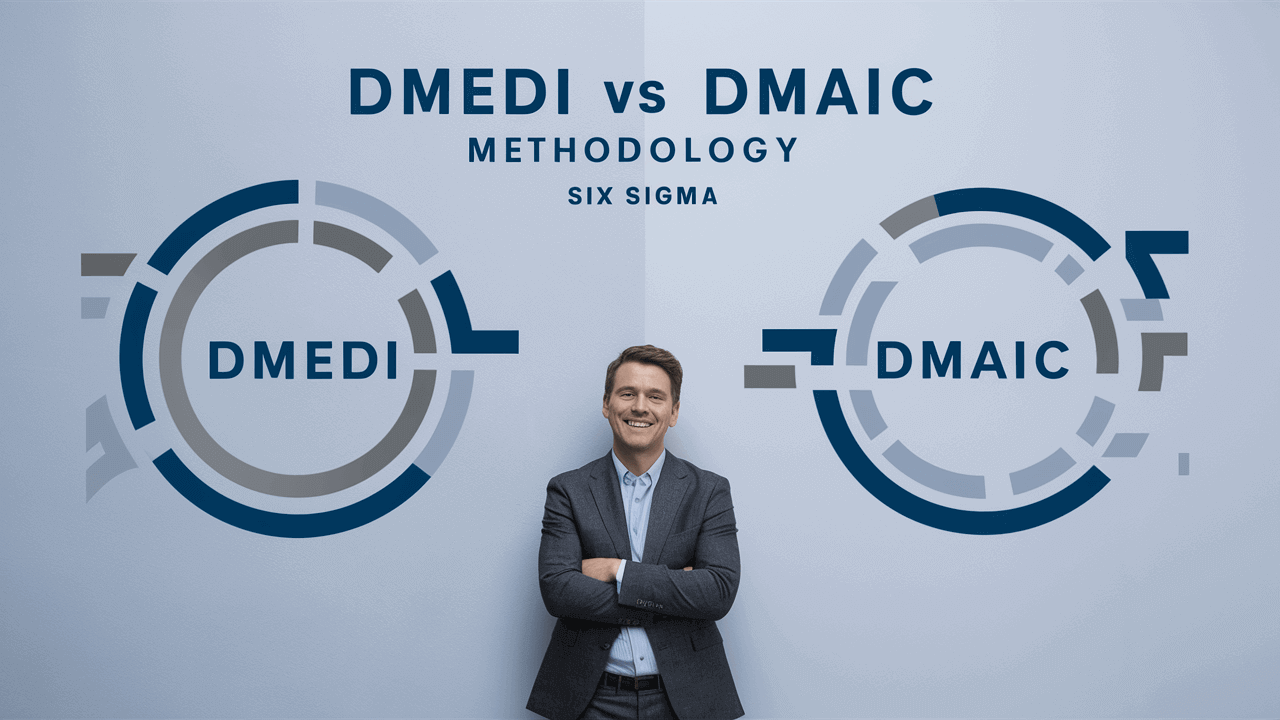Businesses continually strive to improve the quality of their products and services. The race to the bottom line is more fierce than ever because of new technologies that are constantly entering the commercial world. Businesses are frantically trying to increase their productivity and overall efficiency. As a result, companies are using DMAIC, which is one of the fundamental approaches that serve as a basis for Six Sigma initiatives or any project aimed at process improvement. DMAIC Tools assist companies in increasing revenue, decreasing the cost of defective products, and generally enhancing performance and efficiency.
Jump ahead to
What is the DMAIC methodology?
DMAIC is a problem-solving and quality improvement process used to enhance business performance. It is a crucial component of the Six Sigma technique, but it may also be used as a stand-alone improvement method or in combination with other process improvements, such as Lean. The DMAIC approach is helpful when a business has to enhance a procedure. It reduces the chances of fixing the wrong problem by analyzing the process before implementing any solution. Additionally, it improves communication within the team and the firm, resulting in better performance and contented clients.
DMAIC Methodology and Phases
DMAIC methodology encompasses five phases, which are intended to create the framework for process improvement, set goals, monitor progress, and assess outcomes.
- Define: Define the problem, improvement activity, the opportunity for improvement, project goals, and customer requirements.
- Measure: Measure the efficiency of the process.
- Analyze: Analyze the process to identify the underlying reasons for variance and poor performance (defects).
- Improve: Enhance process effectiveness by identifying and removing the root issues.
- Control: Control the improved process and future process performance.
The five phases are an improvement cycle that should be constantly performed to find the best practices and get closer to ideal procedures.

Tools used in the Define phase
Define is the first phase of the DMAIC methodology. The goal of the define phase is to specify the problem that the team will address. Following are the most commonly used DMAIC Tools in the define phase.
Project charter:
A project charter is a written statement outlining the overall goals and objectives of a Six Sigma process improvement and problem-solving project. This document contains data-driven information explaining the need for the project and is the primary source of reference for the Six Sigma team after it has been authorized. The project charter address vital issues, such as the problem statement, the business case, and the goal statement.
Voice of the customer:
The voice of the customer refers to customer’s views, preferences, and expectations for a specific product or service. It is a client’s opinion about a certain item or service. Several methods achieve this, including surveys, focus groups, and direct consumer feedback.
Process map:
A process map is a tool that visually depicts a process’s inputs, steps, and outputs in a step-by-step flowchart. Process mapping explains processes to team members and those involved in them. It makes it easy to identify the precise areas that require changes, such as bottlenecks, delays, and capacity restrictions. The inputs, outputs, and process steps are the three main elements of a process map.
Tools used in the Measure phase
The measure phase acquires process data and assesses the present quality level. During this phase, baselines are established to evaluate the effectiveness of a certain procedure. DMAIC Tools used in the measure phase are:
Pareto Chart:
A Pareto Chart is a cause analysis tool. It uses a bar graph to show statistics, with the length of the bars indicating frequency or cost, and they are organized with the longest bars on the left and the shortest on the right. A Pareto chart helps analyze the frequency of errors or concentrate on one particular problem.
Histograms:
Histograms are the ultimate tool for visualizing process capability. The height of each bar on a histogram displays the frequency with which a certain range of values appears in the data. It comprehends the data by dividing it into smaller groups and then counting the number of data points that belong to each group.
Process capability:
Process capability creates a framework for determining if the current activity complies with requirements. It is a statistical evaluation of the underlying process variability of a certain characteristic. Furthermore, it evaluates a process’s capacity to satisfy requirements.
Tools used in the Analyze phase
Teams identify and test the root causes of issues during this analysis phase to ensure that improvement occurs at the source of the problems. The most commonly used DMAIC Tools in analyze phase are as follows:
Fishbone diagram:
A fishbone diagram, also known as a cause and effect diagram, is a visual tool to identify every possible reason for a process or product failure. It is employed when performing root cause analysis at a deeper level, which might lead to remedies that could eliminate the ongoing problem.
5 whys:
Teams can discover the underlying causes of problems by using the 5Whys technique. They present a problem before posing a string of “why” questions that go further into the root of any problem. Instead of wasting time on the problem’s symptoms, a team may find the fundamental reasons by asking a series of why questions.
FMEA:
FMEA is a systematic, proactive method for assessing a process to determine where and how it could fail as well as to gauge the relative impact of various failures to identify the areas of the process that require the most significant improvement. FMEA identifies possible reliability issues early in the development cycle, enabling the team to react quickly and reduce failure.
Tools used in the Improve phase
In the improve phase, the team uses data collection to identify the problem’s cause and create a strategy to solve it. The team enhances the overall procedure using the data and the analysis report. DMAIC Tools used in the improve phase are:
Design of experiments:
Design of Experiments (DOE) assists project teams in identifying the impacts that a process’ inputs have on the finished product. DOE determines the most crucial inputs that must be changed to achieve optimal process performance and assists in revealing the essential connections between variables in a process frequently hidden under all the data.
Kaizen event:
A Kaizen Event is a practical method for quickly putting the best solutions into practice. Stakeholders and experts come together for a short time to concentrate solely on selecting the best options from those provided by the project team. These events often last three to five days.
Countermeasures matrix:
A countermeasures matrix lists a problem, its causes, remedies, and implementation priorities. The team prioritizes this situation by evaluating the suggested actions according to their significance. This matrix serves as a resource for data while developing an action plan.
Tools used in the Control phase
Control phase assures that the changes produced will last. It must ensure that the problems do not occur again and the entire process adheres to the lean six sigma principles. The DMAIC tools used in the control phase are:
5S:
5S stands for sort, straighten, shine, standardize and sustain. It is a diagram that shows how to set up a workplace to maximize efficiency when a new procedure is implemented. 5S aims to reduce the risk of harm and provide a clean, uncluttered environment that enables employees to work efficiently.
Control chart:
A control chart helps identify the reasons for variance in the new process and the remedial actions that must be implemented before there are too many errors. The need for rework or additional product costs to restore an offering is reduced as a result.
Poka-yoke:
Poka-yoke is often referred to as mistake- or error-proofing. It is a tool used in Lean and Six Sigma to identify the areas in a process where errors are most likely to happen. Its purpose is to eliminate product defects by preventing, correcting, or drawing attention to human errors as they occur.
Conclusion
Six sigma methodology’s DMAIC process is intended to increase production and foster efficiency. It serves as a roadmap to keep the team and project progressing effectively. With the proper implementation of DMAIC, businesses can begin to make improvements without unnecessary experimentation. Achieving the Lean Six Sigma Green Belt Certification helps professionals to master the DMAIC methodology and practically apply it in the organization.
Additionally, certified professionals can efficiently apply Lean Six Sigma approaches and enhance the quality of Six Sigma projects.



